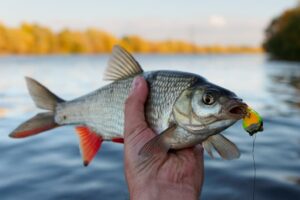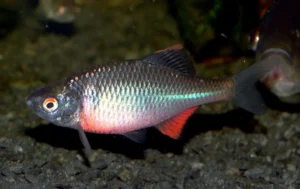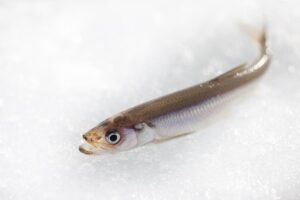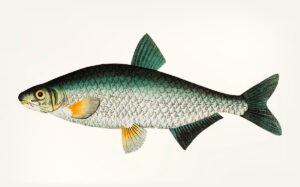Bottom feeder: Ebro Barbel (Luciobarbus graellsii)
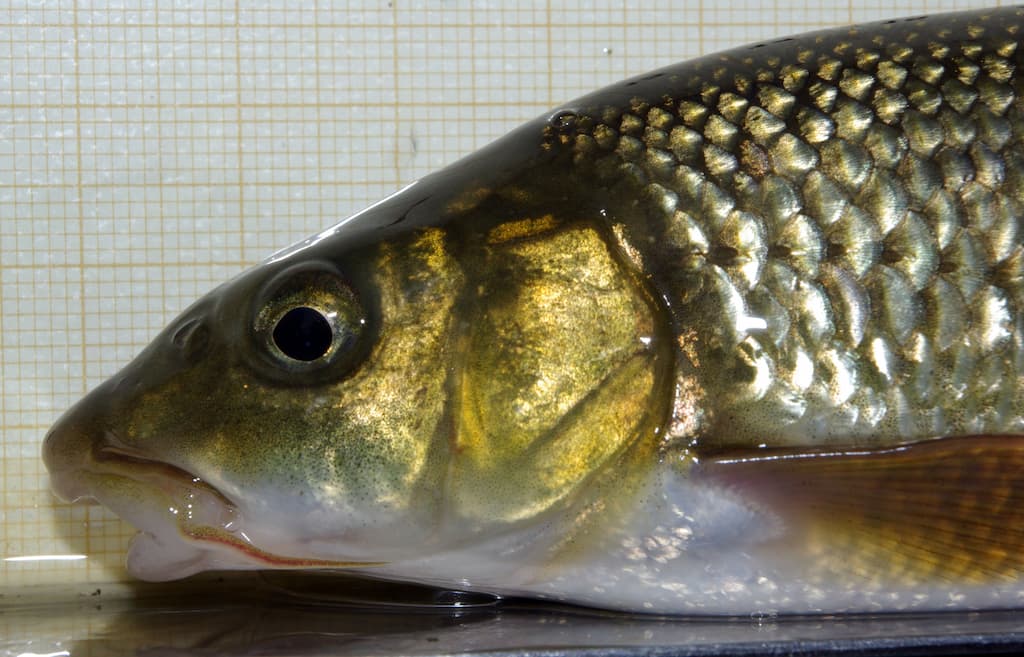
The Ebro Barbel, also known as Luciobarbus graellsii, is a freshwater fish species native to the Ebro River basin in Spain.
It has a streamlined body with a prominent lateral line and a slightly concave head. The body is olive-green with a lighter belly, and the fins are usually reddish. Ebro Barbel can grow up to 60 centimetres in length, weigh around 3 kilograms, and live up to 10 years.
Keys takeaways
- The Ebro Barbel (Luciobarbus graellsii), native to the Ebro River basin in Spain, is notable for its long, cylindrical body, olive-green colouration with a lighter belly, and distinctive elongated head with barbs near the mouth. It typically grows up to 60 cm in length and weighs around 3 kg, living up to 10 years.
- This species, found primarily in the Ebro River Basin, thrives in freshwater environments with moderate to fast currents. Being omnivorous, the Ebro Barbel feeds on benthic invertebrates, algae, and plant matter.
- The Ebro Barbel is a popular target in sport fishing, appreciated for its size and fighting capability when hooked, and is fished using techniques like float, bottom, and fly fishing.
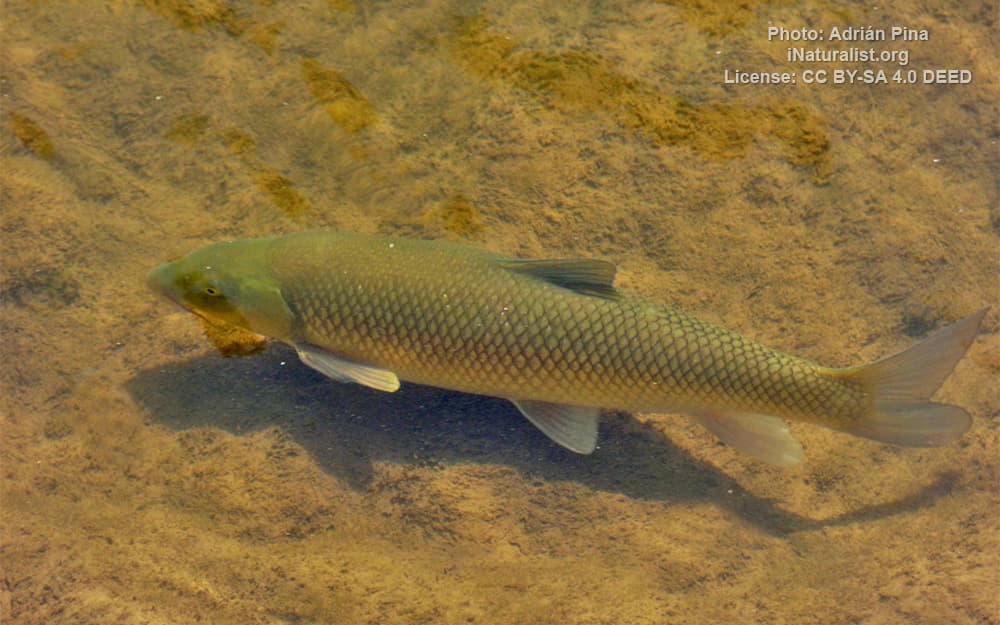
Physical Description of Ebro Barbel (Luciobarbus graellsii)
Body Description
The Ebro Barbel has a long, slender, and somewhat cylindrical body. It’s well adapted to fast-flowing waters. Its body shape is typical of the Cyprinidae family.
Head Description
It has a distinctive, elongated head with a slightly underslung mouth, suited for bottom-feeding. Barbs are present near the mouth.
Body Shape and Colour
This fish typically has a streamlined body with a silvery-grey to brownish colouration on the back, blending into a lighter belly.
Fins Shape and Colour
The fins are usually rounded, with the larger dorsal and tail fins. They are often a shade of grey or brown, sometimes with a reddish tint.
| Class |
| Actinopterygii |
| Order |
| Cypriniformes |
| Family |
| Cyprinidae |
| Genus |
| Luciobarbus |
| Species |
| L. graellsii |
| Binomial Name |
| Luciobarbus graellsii (Steindachner, 1866) |
Size, Weight, and Lifespan
Average Size and Weight
Ebro Barbels can grow large, often reaching 50-70 cm long. They can weigh anywhere between 2 and 4 kg, sometimes more.
Lifespan in the Wild
Depending on environmental conditions, their lifespan can extend to 10-15 years in the wild.
Habitat, Distribution, and Feeding Habits
Natural Habitat
As the name suggests, the Ebro Barbel (Luciobarbus graellsii) is primarily found in the Ebro River Basin in Spain. It inhabits freshwater environments, particularly rivers and streams with moderate to fast currents.
Geographic Distribution
The Ebro Barbel, a species native to the Iberian Peninsula, is found predominantly in the Ebro River and its tributaries. In 1998, it was introduced to several rivers in Tuscany, Italy, where it has since become established in the Albegna, Fiora, and Ombrone drainage basins.
Feeding Habits
This omnivorous species feeds mainly on benthic invertebrates, algae, and plant matter.
Reproduction and Life Cycle
This species reproduces by migrating upstream to spawn in gravel and sandy areas during the spring. After spawning, the eggs hatch within a few days, and the young barbels rapidly multiply, reaching sexual maturity within four years. This rapid growth and maturation is crucial to the species’ reproductive success. The spawning period for this species occurs from late spring to the height of summer, typically from May to August, in faster and shallower stretches of river with gravel and rock bottoms.
Fishing Interests and Techniques
Popular Fishing Interest
The Ebro Barbel (Luciobarbus graellsii) is a popular target for sport fishing due to its size and ability to fight when hooked.
Effective Fishing Techniques
Anglers often use float, bottom, and fly fishing to catch them. Conservation Status
International Common Names
Various international common names, including Barbo del Ebro in Spanish and Ebro-Barbe in French, also known as the Ebro Barbel. Its popularity among anglers has led to the development of specific fishing techniques to catch this species, making it a significant part of sport fishing in the Ebro River basin. In some regions, the Ebro Barbel (Luciobarbus graellsii) is also known as the Andalusian Barbel.
Conservation Status and IUCN Red List
Conservation Efforts
Conservation efforts for the Ebro Barbel focus on habitat protection, water quality management, and sustainable fishing practices.
IUCN Red List Status
The Ebro Barbel (Luciobarbus graellsii) is currently listed as Least Concern on the IUCN Red List, indicating that it is not facing any significant threats to its population. However, continuous monitoring and conservation efforts are essential to ensure its long-term survival.
In conclusion, the Ebro Barbel, or Luciobarbus graellsii, is a fascinating freshwater fish native to the Iberian Peninsula. Its unique physical characteristics, habitat preferences, and popularity among anglers make it an essential and exciting component of river ecosystems and freshwater fishing experiences. Efforts to conserve its natural habitat and maintain sustainable fishing practices will be crucial in ensuring the continued presence of this remarkable species in the wild.

